A Brief Overview of Common Styles
While some may find the codification of various approaches to rope interesting, others will find it unnecessary or unhelpful. Our main concern with drawing attention to different styles of rope is not to argue about what those categories are and how they should be defined, but instead to simply call attention to the fact that “rope bondage” can mean different things to different people.
In the broadest strokes, we can divide rope bondage styles into two main categories: Japanese and Western. Each has a few major identifying characteristics. However, one common way to distinguish between Western and Japanese rope bondage is that, in Western rope bondage, a person is typically tied so that other things can be done to them, while in Japanese rope bondage, the tying is what is being done to them.
Obviously, there’s no bright line of separation here, and as we move from the mid 1900s into contemporary rope, any distinctions that do exist become less significant as more crossover and “hybrid” rope forms emerge. We offer a few characteristics below for academic consideration, but we are not suggesting that these characteristics “must” be present or are the only distinguishing aspects.
At the same time, it’s worth mentioning that some make even further distinctions within these groups: styles within styles, so to speak. For instance, in the world of shibari, there are different ryu or “school/styles” of rope with recognizable distinctions in the method of tying, the intention, and the philosophy behind the approach to rope.
All of this is to say: different people will approach the concept of distinction and categorization differently—from not caring at all and combining freely on the one hand to a sincere concern for understanding even minor distinguishing factors from one style to another.
Japanese
- Typically concerned with the beauty and symbolism of the bound form and/or the sado/masochistic pleasures of the experience; the rope itself is the experience
- Arms folded behind the back (“box tie”) is common, as is partial or full suspension
- Typically uses natural-fiber ropes (asanawa – rope made from bast fiber, such as hemp, linen, or jute) of between 5-6 mm diameter
- Contemporary tying in this style usually involves folding 7-8 meter ropes in half and beginning ties with the bight of the folded rope
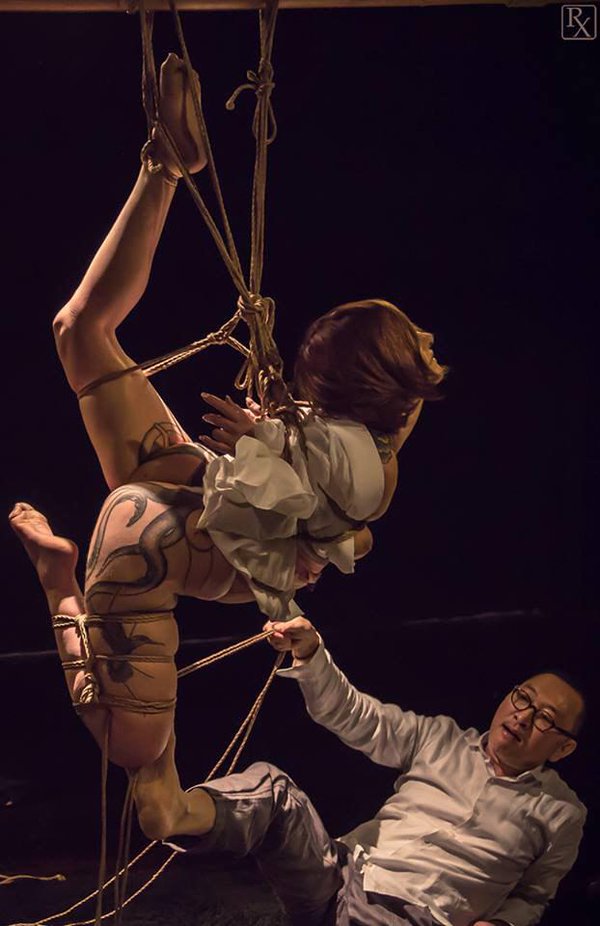
Japanese style tying by Akira Naka; Model: Gorgone; Photography: FredRX 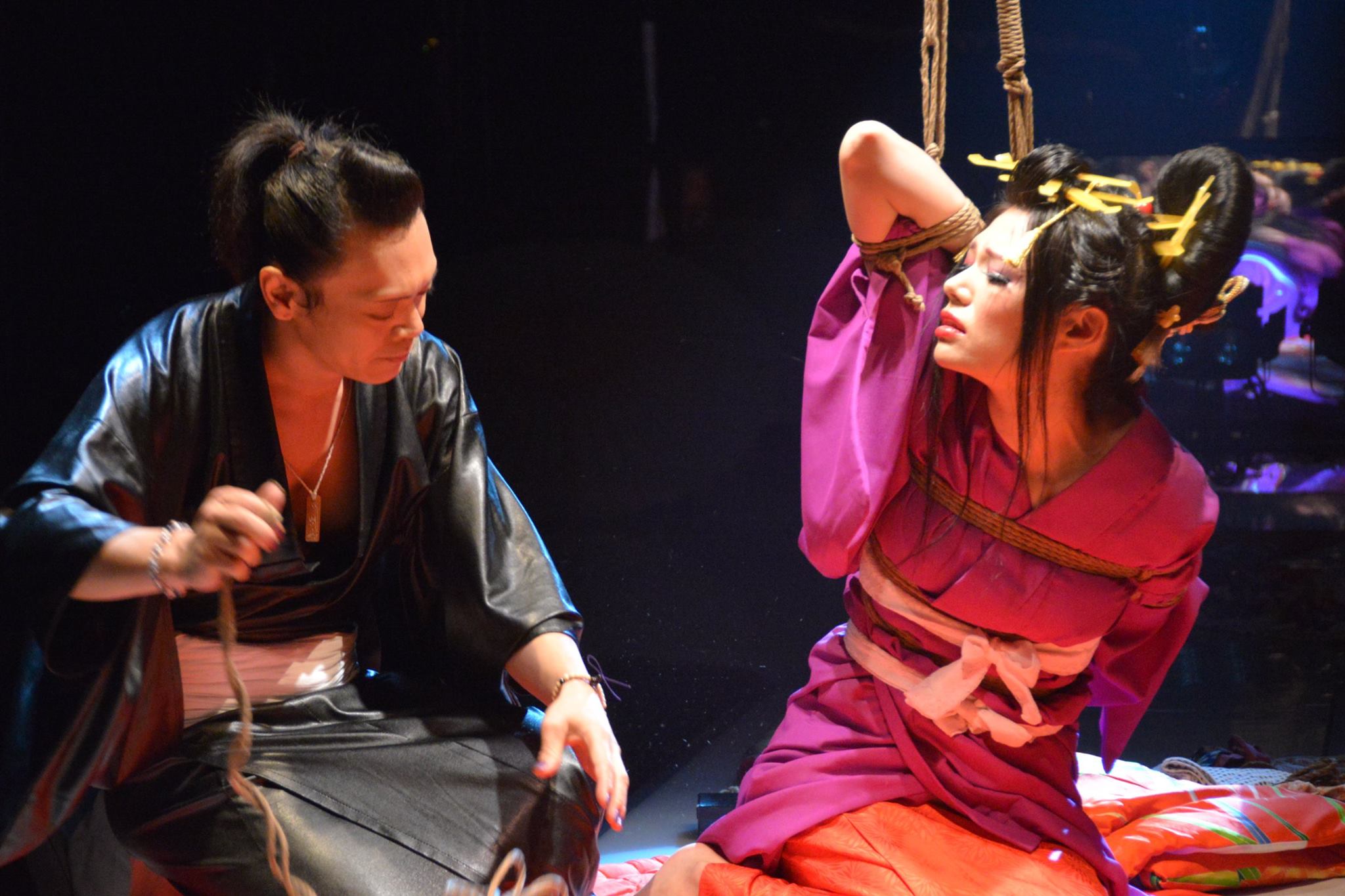
Nawashi Kanna (tying) and Kagura (in rope) 
Rope: Kazami Ranki; Model: Gestalta; Photography: Esinem (esinem.com)
Western
- Typically concerned with the restraint and struggle of the bound partner; the rope is typically a means to an end for other activities
- Strappado/armbinders are common, as are gags and bondage to furniture; suspension is rare
- Typically uses synthetic (nylon) or cotton ropes, often 6-8 mm diameter or more
- This style may use folded ropes, but often uses single strands of thicker ropes

Bettie Page photographed by Irving Klaw 
Western style bondage by JBRope; model: KylieJo 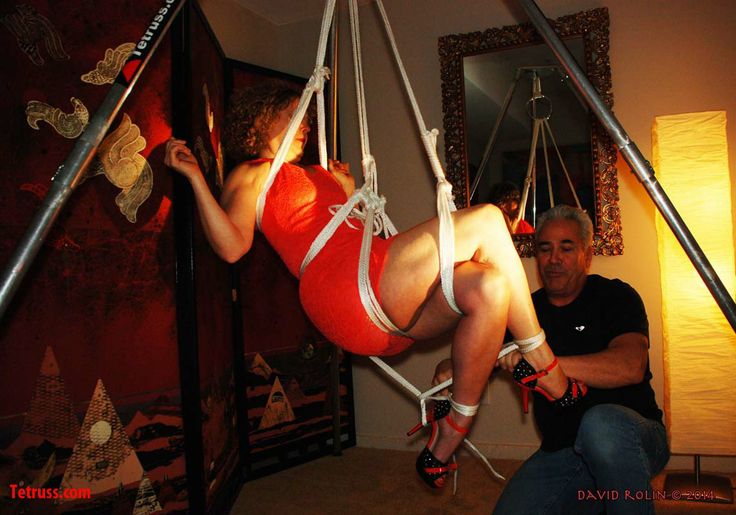
Lew Rubens tying a Western-style suspension 
Example of the the functional/practical side of Western rope bondage
Other Ways to Make Distinctions
Beyond these major divisions, there are a number of other ways to identify common variations by the purpose, intent, or goal of the bondage. There is no exhaustive or definitive list, because rope bondage is constantly evolving, and there’s no “official list” or consensus. Below are a few examples, but keep in mind that the lines between categories are usually not well-defined, and most rope is a blend of various styles.
Decorative Rope: This type of rope tends to be more elaborate, and the focus is usually on the patterns created by the rope on the body. Extreme forms can come close to resembling clothing.
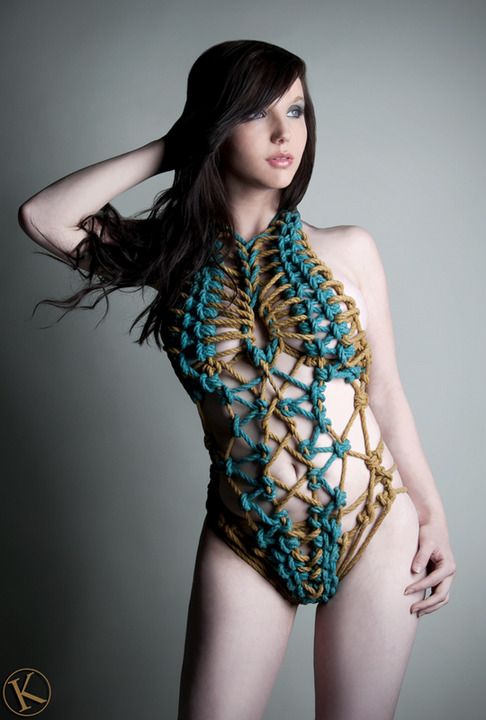
Decorative rope “dress” style of Fred Kyrel 
Decorative arm binding by Denis Khiusov 
Decorative rope in the style of clothing 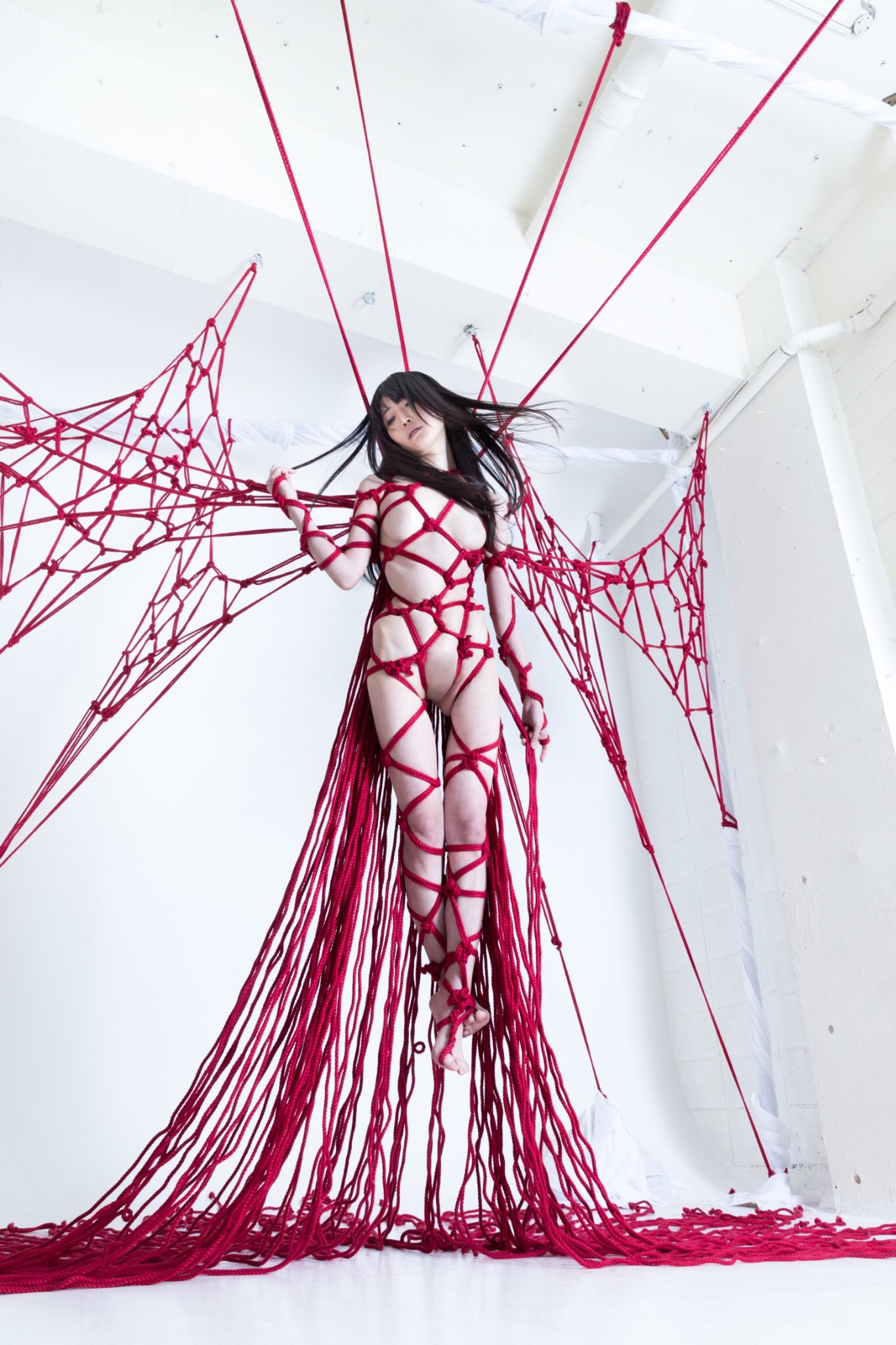
Decorative hybrid (in the style of Japanese bondage and suspension) by Hajime Kinoko
Rope for Porn: There’s an entire genre of rope that has evolved in the porn industry. Typically, this combines the functional purposes of Western bondage with some of the aesthetics from Japanese bondage. (Importantly, in Japan, rope bondage had its origins in sex work, nude theaters, SM shows, and the like, and many of the famous rope artists made a career out of tying for porn magazines and videos.) Today in the U.S. mainstream porn industry, you’ll mainly see this used to tie and hold females in exposed and easily-accessible positions.
Sensual or Sadistic Rope: Some people have strong preferences about how sensual the interaction is and how much physical stress or pain is involved in the interaction. Sadistic or “torture” rope is often referred to as semenawa (Japanese for “attacking rope”), where the rope is used for the “pleasurable mistreatment” of the bound person. Many rope practitioners see the emotional connection or SM aspects of rope as central to the purpose of rope, with technique, patterns, positions, and the like taking a distant second place.
Rope for Performance: Some people use rope as a type of performance. Live rope performances tend to be more dynamic and may use more intricate ties, where the tying itself is the focus of the performance and may include elements like elaborate lighting, fast-paced and sweeping transitions, glowing multi-colored rope, and the like. Rope for photography or video often uses rope as a way to pose (or expose), present, or display the bound form.
Again, this is not an exhaustive list of distinctions, nor is it the only way to make distinctions in the world of rope. However, our primary goal here is to recognize that when someone says they “enjoy” or “practice” rope bondage, there is a wide range of things that statement could mean.